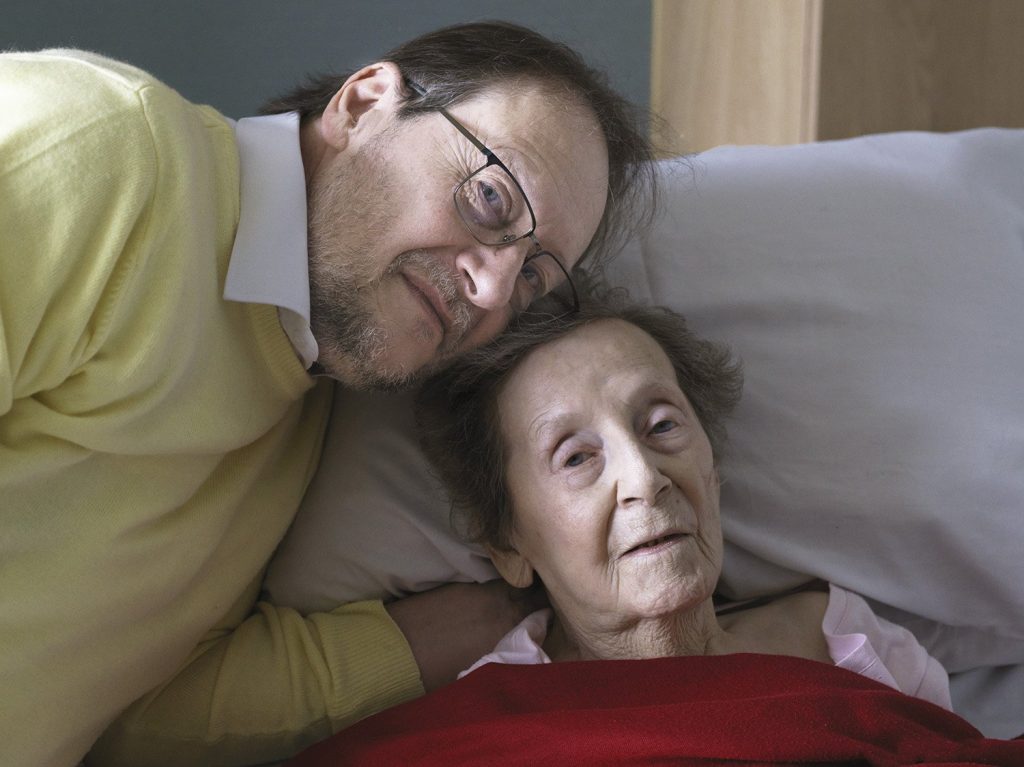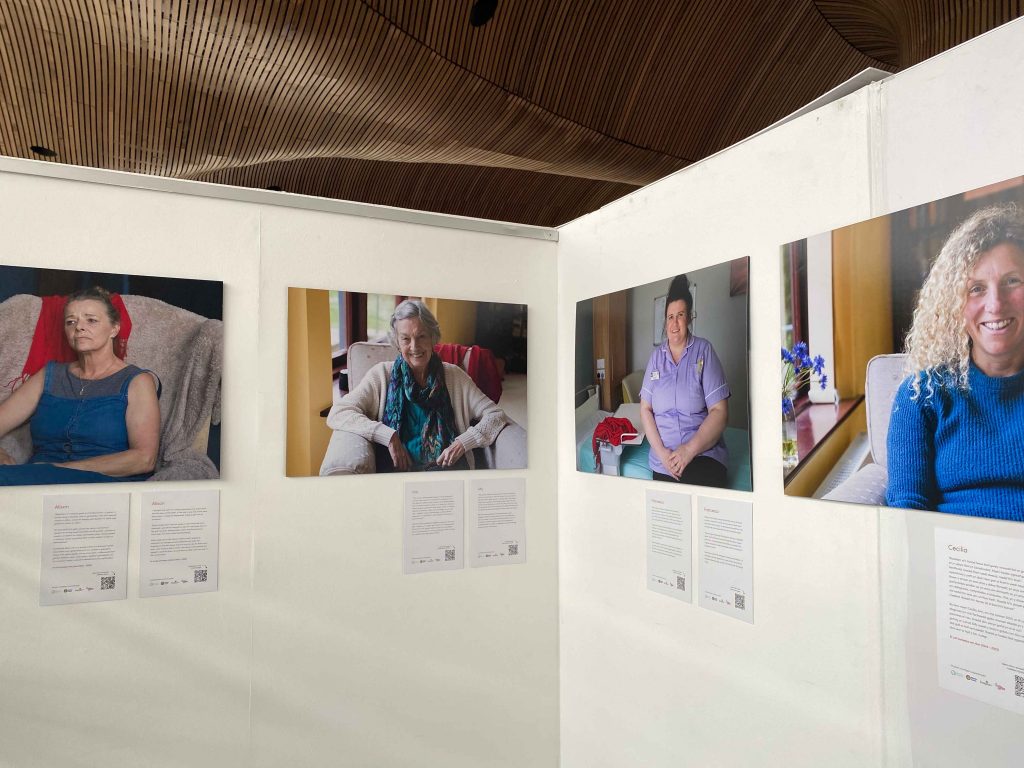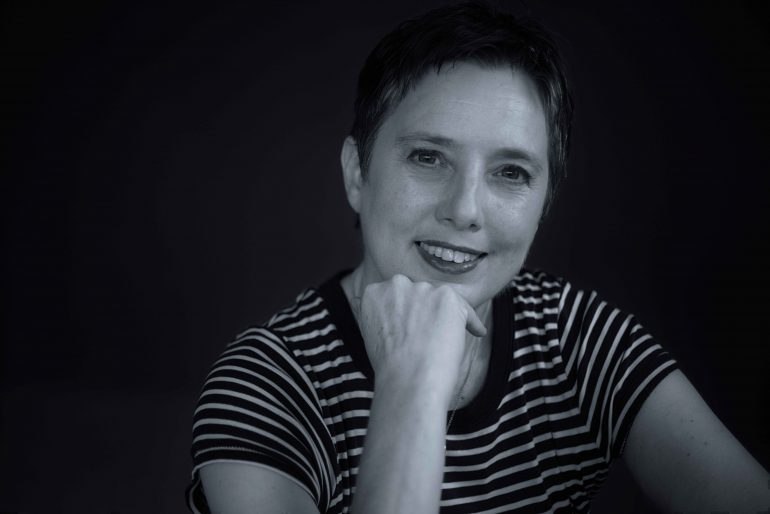Photographer Ceridwen Hughes wants to change how people talk about their final years in the context of an ageing Wales
A WOMAN’S experience of losing her mother to cancer has inspired her to stage an exhibition about the challenges families face around end-of-life care.
Ceridwen Hughes’ exhibition What Matters Most? has opened at the Senedd in Cardiff Bay and is there until February 15.
In 2020, Ceridwen and her siblings lost their mother, Joan Barkley, to cancer. After being told that Joan’s only treatment options were palliative, Ceridwen found that the family were unsure on how to give her adequate support, and the experience was “very difficult.” The family were not visited by a GP after Joan had signed a ‘do not resuscitate’ (DNR) order issued by a doctor, and they found it difficult to get through to district nurses for advice.

“I realised how difficult it can be to die in the place of your choosing,” she explained.
Among those who participated in the What Matters Most? project is Philip Banfield , who relives his experience with his mother Shirley Gale, who received palliative hospice care after being diagnosed with bowel cancer.
Ceridwen said: “It was helpful for Phil as they [he and Shirley] had had an honest conversation about how they love each other, and she is proud of him.”

Ceridwen said hearing their story was difficult for her, as she never got to have these conversations with her mum. But that is why it is so important to change the narrative on end-of-life care.
People are often too scared to say the words ‘dying’ or ‘death'”
Ceridwen Hughes
Ceridwen and her family said they “did not feel as if they were partners in Joan’s care”. A 2022 quality statement on palliative and end of life care in Wales from the Welsh Government highlighted this issue, saying that in future modernisation of palliative care, “family and carers will be informed and prepared in a timely way about how they can provide care in a safe and supported way and at the level in which they feel able to provide it should they choose to”.
Working with Hospice UK, Marie Curie and the National Lottery Community Fund, Ceridwen developed the collaborative photography and film project What Matters Most?
In the context of Wales’ ageing population, the exhibition is a “timely exploration of how end of life care can be improved, based on the experiences of those directly involved”.
“People are often too scared to say the words ‘dying’ or ‘death’,” said Ceridwen.

A 2022 report from the Older People’s Commissioner for Wales estimated that there are 866,006 people over the age of 60 living in Wales. To put this number into perspective, the population of Wales sits at approximately 3.1 million, meaning that nearly 30% of Wales’ population is over 60. It is therefore a more important time than ever to change the narrative on death.
But Ceridwen was keen to highlight that it’s not just old people who die. “30% of children under the age of five with a rare disease die before their fifth birthday.”
Discussing the challenges in speaking to children about end-of-life care, Ceridwen said she had recently visited the Marie Curie Hospice in Penarth and found that children are surprisingly apt at having these conversations about their end of life wishes.
Ceridwen has found through her projects that there is a cultural issue in the UK in talking about death. She said that in Mexico, people celebrate death in the Day of the Dead festival. These ideas are not shared in the UK, and it means that often people don’t have conversations about their palliative care wishes until they are very unwell and cannot communicate these.
Same but Different has worked on various projects, putting people at the heart of the story through photography and lived experience. The organisation was set up in 2015 after Ceridwen’s son, Isaac, was born with Moebius Syndrome, a condition which causes a facial difference due to nerve weakness or paralysis.
Ceridwen said it can be difficult to make friends if you look different. “People don’t make the extra effort to engage,” she said. “They just see difference.”
Previously, Ceridwen worked in marketing, and decided to fuse her skills in the arts to allow people to see the face behind the illness. The organisation’s first campaign, called ‘Rare Aware’, was inspired by Isaac, collaborating with other parents to counteract prejudice.
Now, Ceridwen runs Same but Different full-time. Although the organisation is based in North Wales, its work covers Wales as a whole.
The What Matters Most? exhibition will be at the Senedd until February 15, 2024. You can view the film for the exhibition here: https://www.samebutdifferentcic.org.uk/whatmattersmost-film



